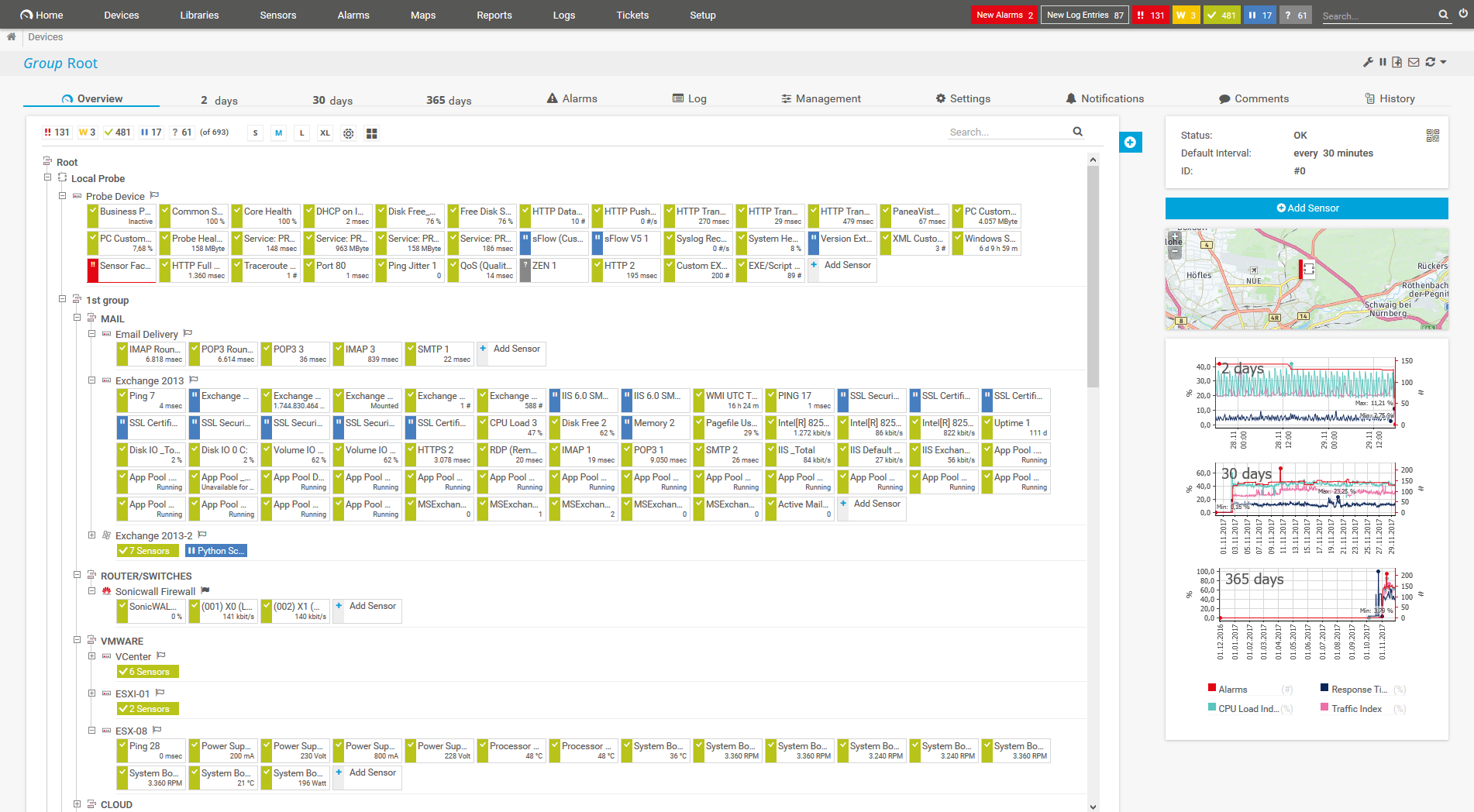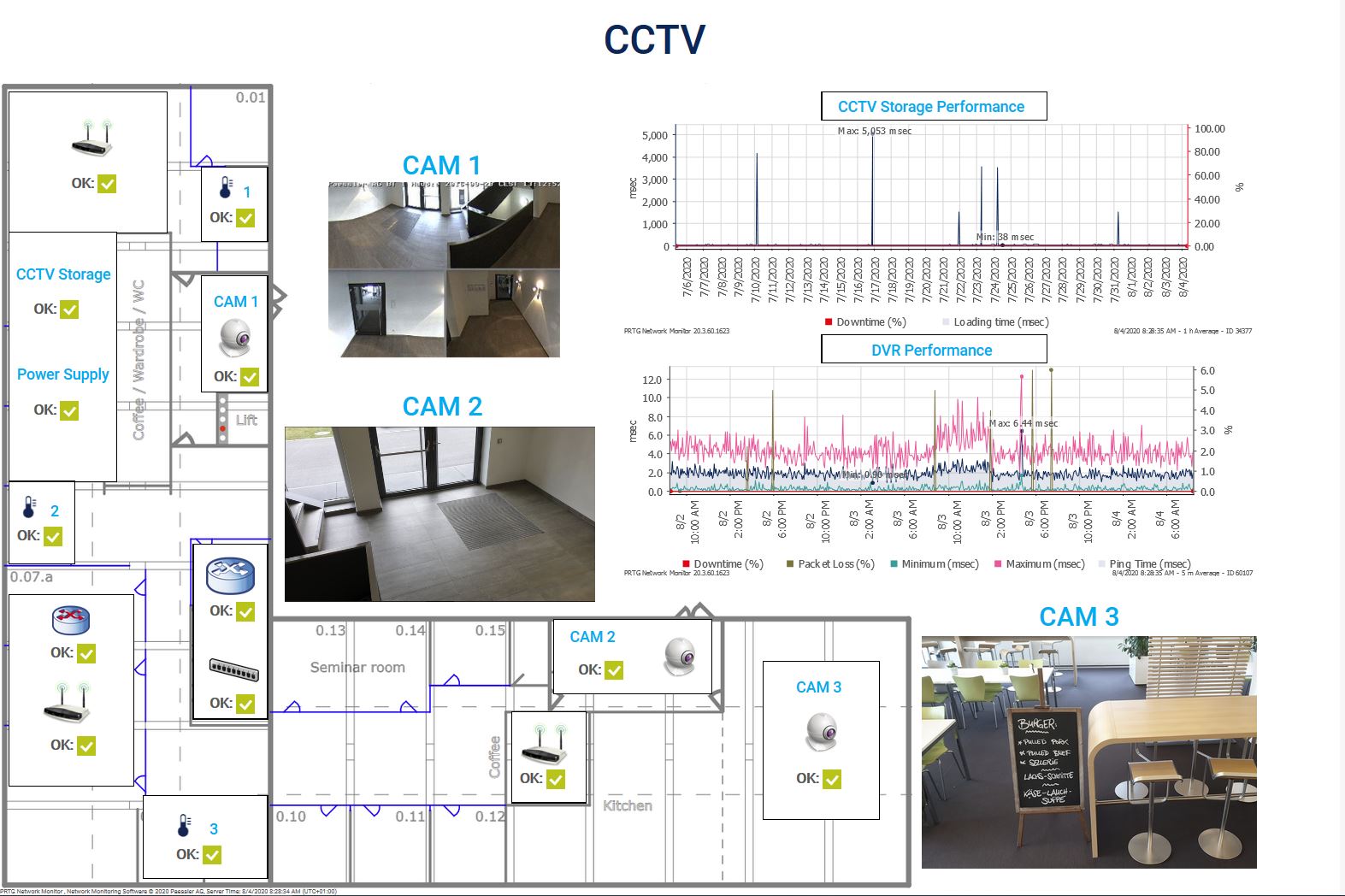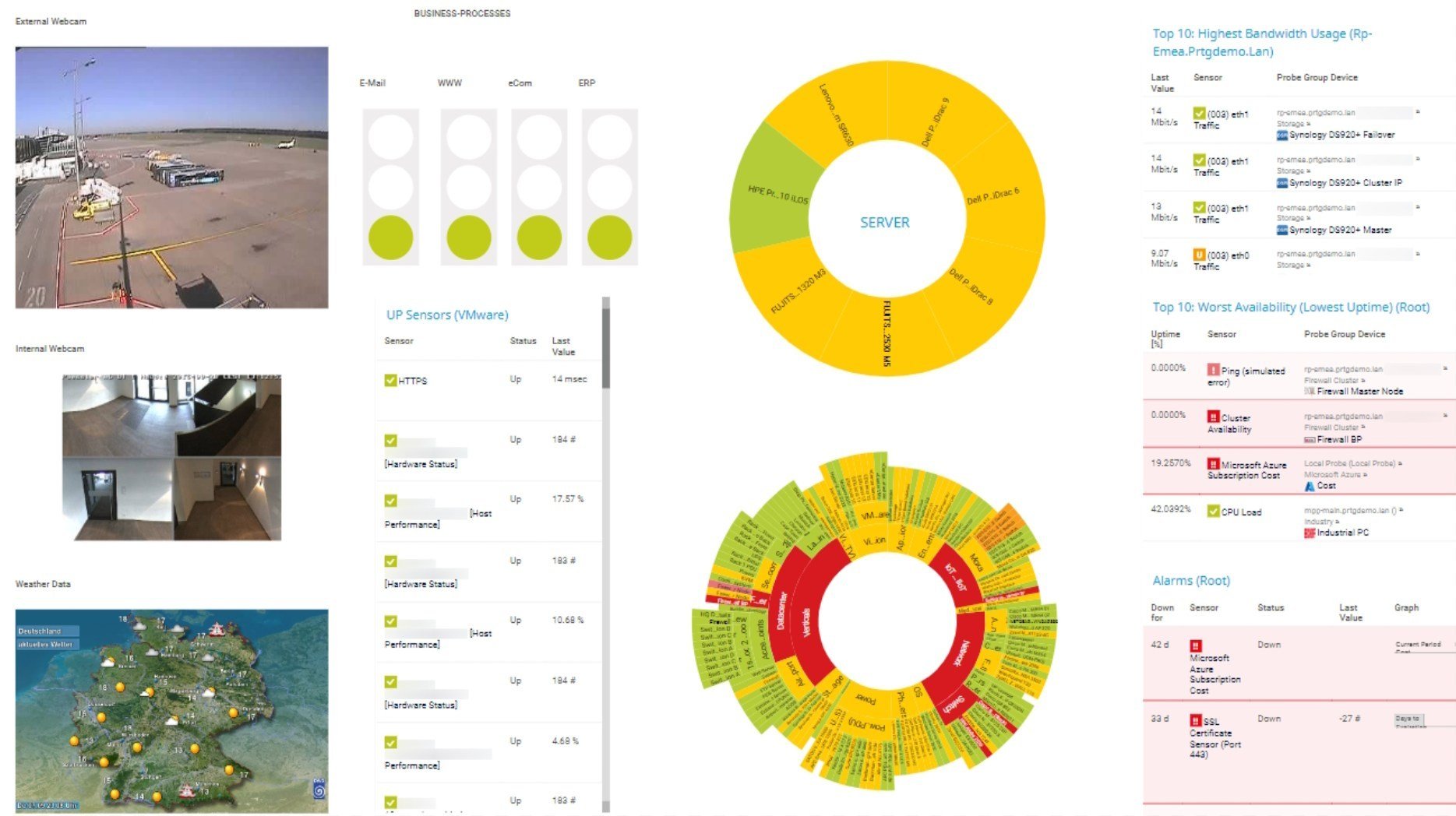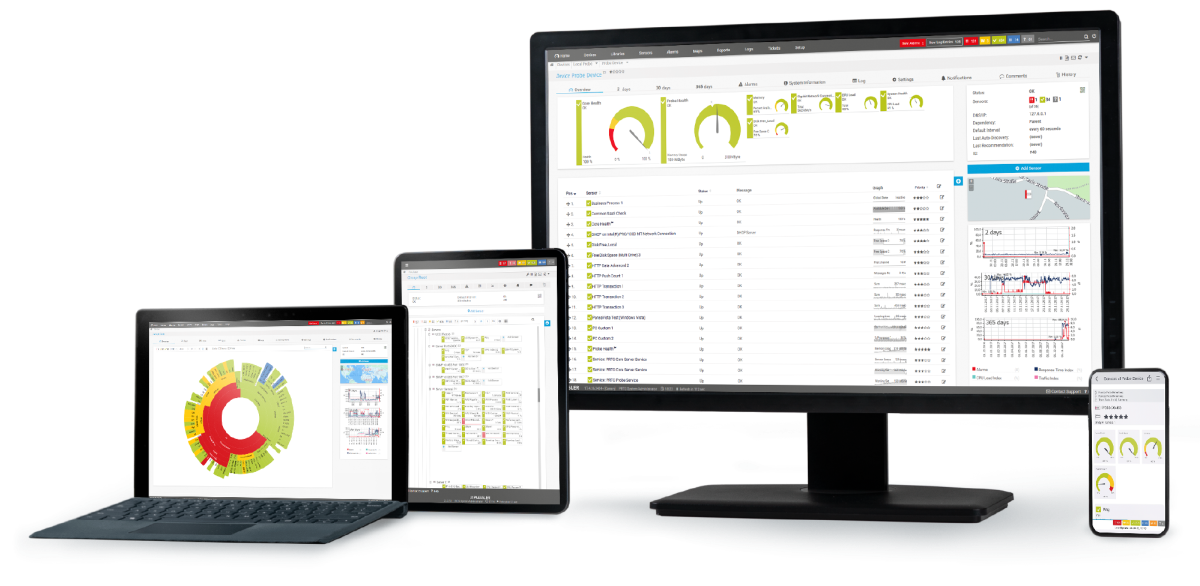Custom alerts and data visualization let you quickly identify and prevent security issues due to failing cameras and other unplanned issues.
To ensure the best on-site (physical) security, your surveillance systems must function without any interruptions. However, only having your CCTV security cameras running doesn’t mean that the underlying CCTV system is working properly.
Storage issues, failures in the transmission of data, or overheating power supplies, to mention just a few possible problems, can affect your video surveillance more than the loss of a few cameras.
A video surveillance system includes multiple components that are essential for the entire CCTV system:
This is why it is crucial that you monitor CCTV with a comprehensive CCTV monitoring software like Paessler PRTG.
Diagnose network issues your closed-circuit-television system. Show live video feeds, CCTV footage, suspicious activity, motion detection, access control, uptime, and other key metrics in real time. Visualize monitoring data in clear graphs and dashboards to identify problems more easily. Gain the overview you need to troubleshoot issues with the availability of CCTV cameras and support your security teams and CCTV operators with comprehensive security monitoring.

Device tree view of the complete monitoring setup

Custom PRTG dashboard with floor plan and video feeds

Custom PRTG dashboard for keeping an eye on the entire IT infrastructure
Custom alerts and data visualization let you quickly identify and prevent and prevent.
PRTG is set up in a matter of minutes and can be used on a wide variety of mobile devices.

Partnering with innovative IT vendors, Paessler unleashes synergies to create
new and additional benefits for joined customers.
Axis offers one of the most complete and reliable product portfolios, an expanded professional network, and comprehensive integration support for video management software.
Paessler is member of the mioty alliance, composed of companies that use mioty to create innovative IoT and IIoT solutions such as the retrofitting of industrial environments.
Osirium’s experienced management team has an outstanding track record in cybersecurity and automation, establishing its headquarters near Reading, UK.
Real-time notifications mean faster troubleshooting so that you can act before more serious issues occur.
Network Monitoring Software – Version 25.3.110.1313 (August 27, 2025)
Download for Windows and cloud-based version PRTG Hosted Monitor available
English, German, Spanish, French, Portuguese, Dutch, Russian, Japanese, and Simplified Chinese
Network devices, bandwidth, servers, applications, virtual environments, remote systems, IoT, and more
Choose the PRTG Network Monitor subscription that's best for you
CCTV stands for Closed-Circuit Television, a system used to monitor and record activity within a specific area. It involves the use of video cameras to transmit signals to a specific, limited set of monitors or recording devices, rather than broadcasting them publicly. CCTV is commonly employed for security and surveillance purposes in various settings, such as homes, businesses, public spaces, and transportation systems.
CCTV monitoring refers to the continuous observation and analysis of video feeds captured by Closed-Circuit Television (CCTV) systems. It involves watching live or recorded footage from CCTV cameras to ensure security, safety, or operational efficiency in a particular area or facility. In the context of network monitoring, CCTV monitoring also means keeping an eye on the availability and performance of the CCTV systems and devices themselves.
Using a video surveillance system usually means that a vital part of your network and building security depends on this system. This dependance makes it crucial to have a central overview of your entire CCTV environment. PRTG’s CCTV monitoring offers many benefits, including:
In PRTG, “sensors” are the basic monitoring elements. One sensor usually monitors one measured value in your network, for example the traffic of a switch port, the CPU load of a server, or the free space on a disk drive. On average, you need about 5-10 sensors per device or one sensor per switch port.
Paessler conducted trials in over 600 IT departments worldwide to tune its network monitoring software closer to the needs of sysadmins. The result of the survey: over 95% of the participants would recommend PRTG – or already have.
Paessler PRTG is used by companies of all sizes. Sysadmins love PRTG because it makes their job a whole lot easier.
Bandwidth, servers, virtual environments, websites, VoIP services – PRTG keeps an eye on your entire network.
Everyone has different monitoring needs. That’s why we let you try PRTG for free.